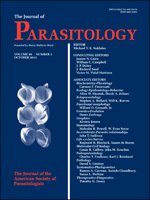A new species of Hexabothriidae, Mobulicola enantiomorphica n. gen., n. sp., is described on the basis of specimens collected from the gill of a lesser devil ray, Mobula hypostoma (Bancroft, 1831) (Rajiformes: Mobulidae), captured in the northern Gulf of Mexico (30°13′49.22″N, 88°20′31.69″W) off Dauphin Island, Alabama. We also herein redescribe Mobulicola dubium (Euzet and Maillard, 1967) n. comb. on the basis of the holotype (36HG-69-1) and paratypes (36HG-69-2 and 36HG-69-3) collected from the gill of a lesser Guinean devil ray, Mobula rochebrunei (Vaillant, 1879), captured in the eastern Atlantic Ocean off the island of Gorée (14°40′02.26″N, 17°23′4.96″W), Senegal. Mobulicola has the following combination of diagnostic features that differentiate it from other hexabothriid genera: haptor symmetrical; vasa efferentia narrow for entire length (not dilated distally), glandular-walled, joining medially immediately anterior to testicular field; vas deferens glandular for part or all of length and extensively convoluted; male copulatory organ massive, oblong, unarmed, dilated for entire length, lacking prostatic region; seminal receptacle present; ootype lacking longitudinal rows of large cells (ootype côtelé); vaginae parallel, with well-differentiated proximal (narrow, tube-like) and distal (laterally expanded, musculoglandular) portions; uterine eggs with 2 elongate filaments. Mobulicola is morphologically most similar to Branchotenthes Bullard and Dippenaar, 2003 but differs from it by the combination of having short, delicate vasa efferentia that are narrow for their entire length and that each extends slightly anteriad from the testicular field before uniting medially, a vas deferens that is convoluted between the common vitelline duct and male copulatory organ, an ovate, compact seminal receptacle, an ovary that ascends, descends, then ascends, and a proximal uterus that is extensively convoluted posterior to the male copulatory organ. The new species differs from M. dubium by the combination of having a proportionally shorter sclerite hook (19–29% of sclerite shaft total length), a vas deferens that is glandular-walled and laterally expanded proximally and nonglandular and narrow distally, and a common vitelline duct with dextral and sinistral loops extending anteriad. This is only the second report of a hexabothriid from a mobulid and the first report of a monogenoid from Mobula hypostoma.
How to translate text using browser tools
1 October 2013
Hexabothriids of Devil Rays (Mobulidae): New Genus and Species from Gill of Mobula hypostoma in the Northern Gulf of Mexico and Redescription of a Congener From Mobula rochebrunei in the Eastern Atlantic Ocean
Raquel Patella,
Stephen A. Bullard
ACCESS THE FULL ARTICLE

Journal of Parasitology
Vol. 99 • No. 5
October 2013
Vol. 99 • No. 5
October 2013




